The advances in science during the Victorian age helped to feed the imaginations of Joules Verne and other creative writers.
Among these advances were ever larger and more powerful telescopes. This allowed the astronomers of the time to see with
ever finer detail the natures of other worlds. Mars was observed to have a year of 687 Earth days and that the Martian
day was 24.65 hours. This was, of course, very suggestive that Mars might be very much like Earth. As photography was
still in its infancy, Astronomers relied on their direct observation and sketch what they saw.
I hope to present a series of images of the Victorian's view of Mars and our current view as comparison. A few points need to be kept in mind. The image in a refracting telescope are inverted, this was of course well known to the Victorians, but since this was the view seen by all observers, the image as it appears in the telescope is the orientation excepted as correct by convention. This can cause some confusion when comparing current images with those of the past. I have adjusted the following to the Victorian convention and aliened then to the prime meridian centered.
To see how the view of Mars from the Earth changes with time go to: Orbit of Mars
You can click on the images below to enlarge them (especially the last).
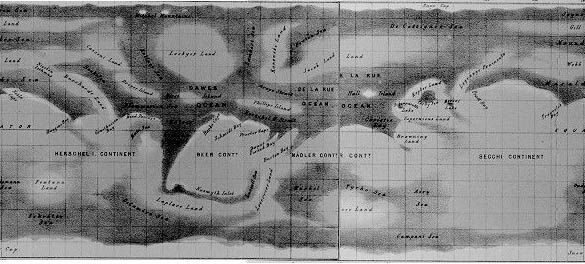
Here we see a fantastic map of Mars as drawn in 1877.
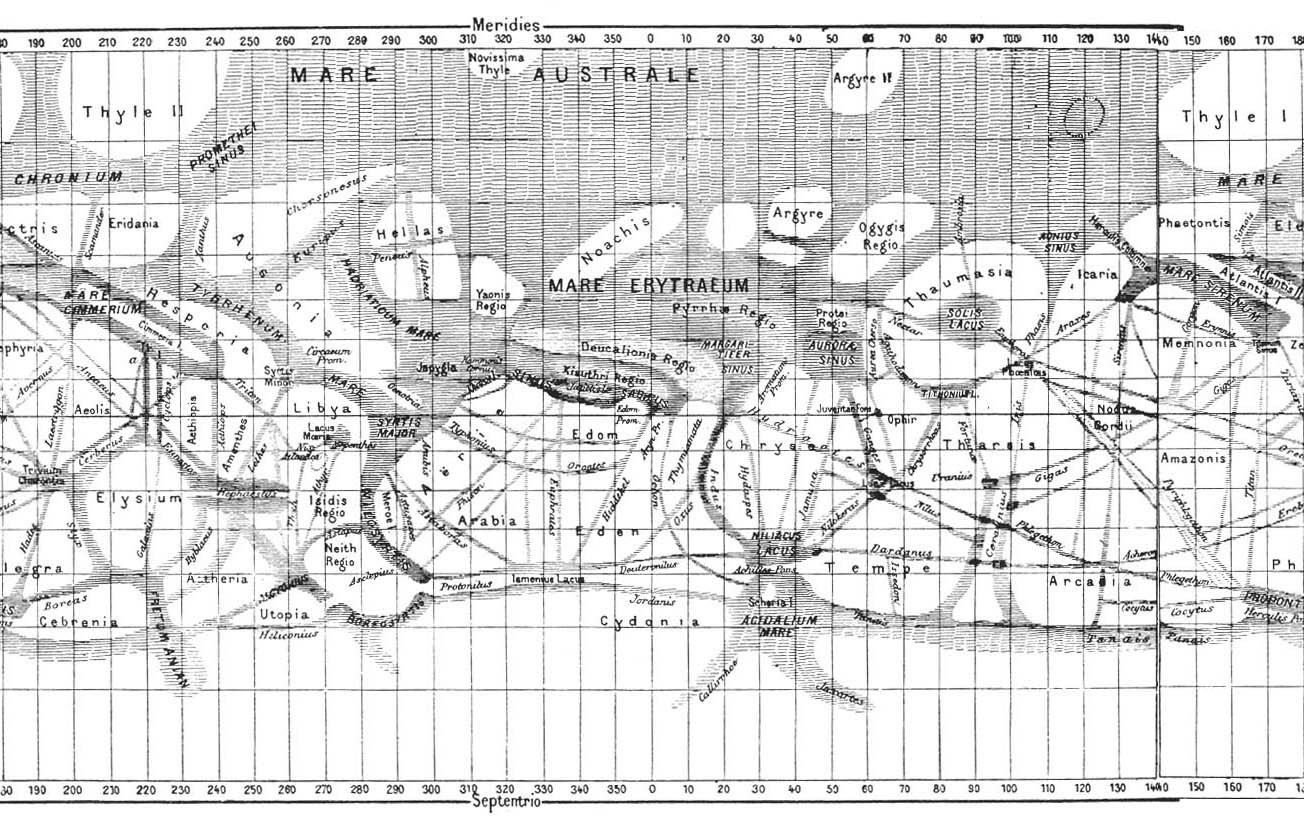
And here a more "detailed" drawing with names assigned to many of the features.
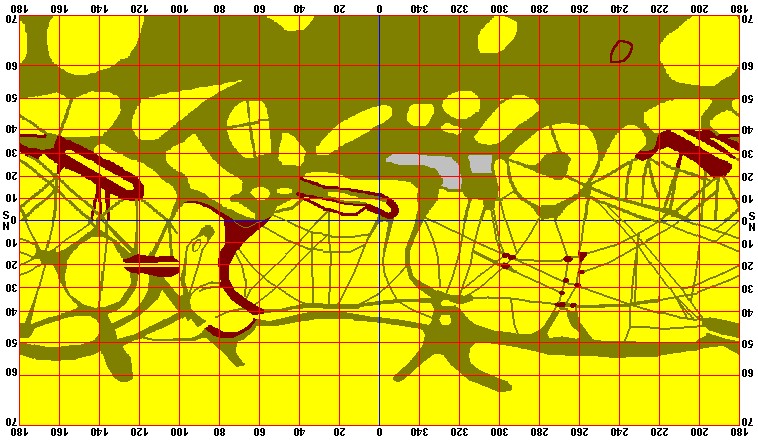
This is a modern schematic showing how Giovanni Virginio Schiaparelli (1835-1910)
interpreted what he saw. The Yellow represents dry ground, the brown water and the gray
swamp land. It was the interpretation of the thin straight line of water as canals
which fired the imagination of the people of the time. Clearly for such structures
to be on the surface of Mars and on a global scale, the peoples of Mars must have
an advanced civilization, more advanced then our own.
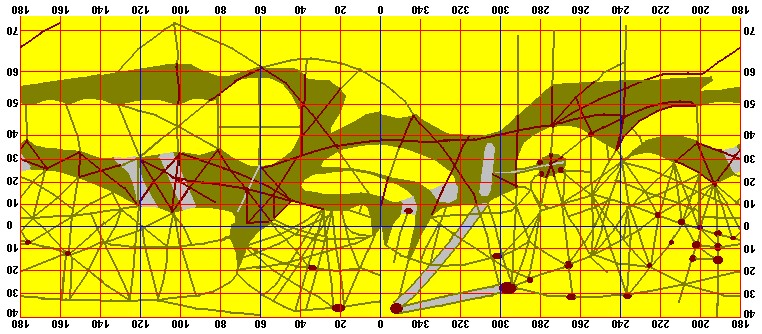
This schematic shows that Percival Lowell (1855-1916) of Boston Mass. saw a great deal
more "canals" on Mars. By comparison to the features as seen on the images that follow,
we can see some of what inspired these interpretations. It has been proposed that the
documented canals which have never been seen in photographs my have been the result of
seeing the blood vessels suppling the retina of the observers' eye reflected off the
surface of the telescope eye peice.
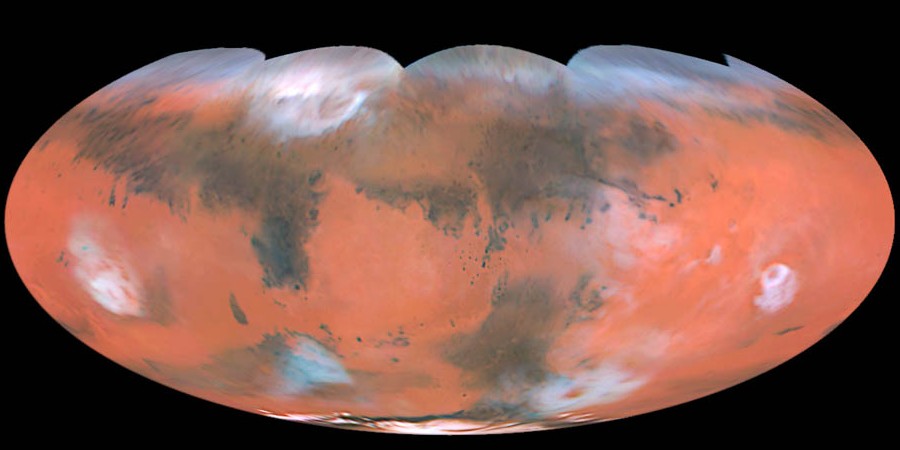
The art of photography was still in its infancy in the Victorian age, and the
technique of combining a telescope with a camera would not become useful until
some years later. Thankfully due to advancements in these techniques in the last 125 years,
we are now able to obtain quality photos like this one.
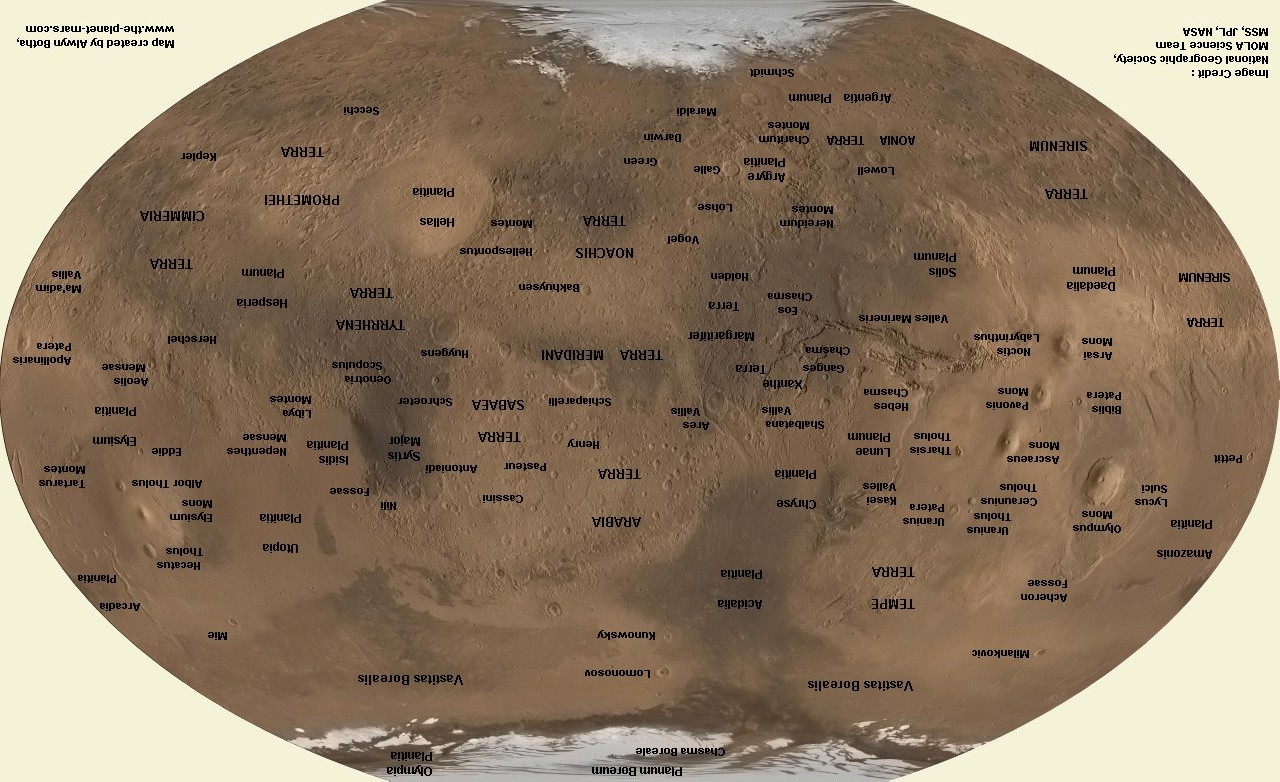
From such photos, very detailed maps of the Martian surface can be drawn.
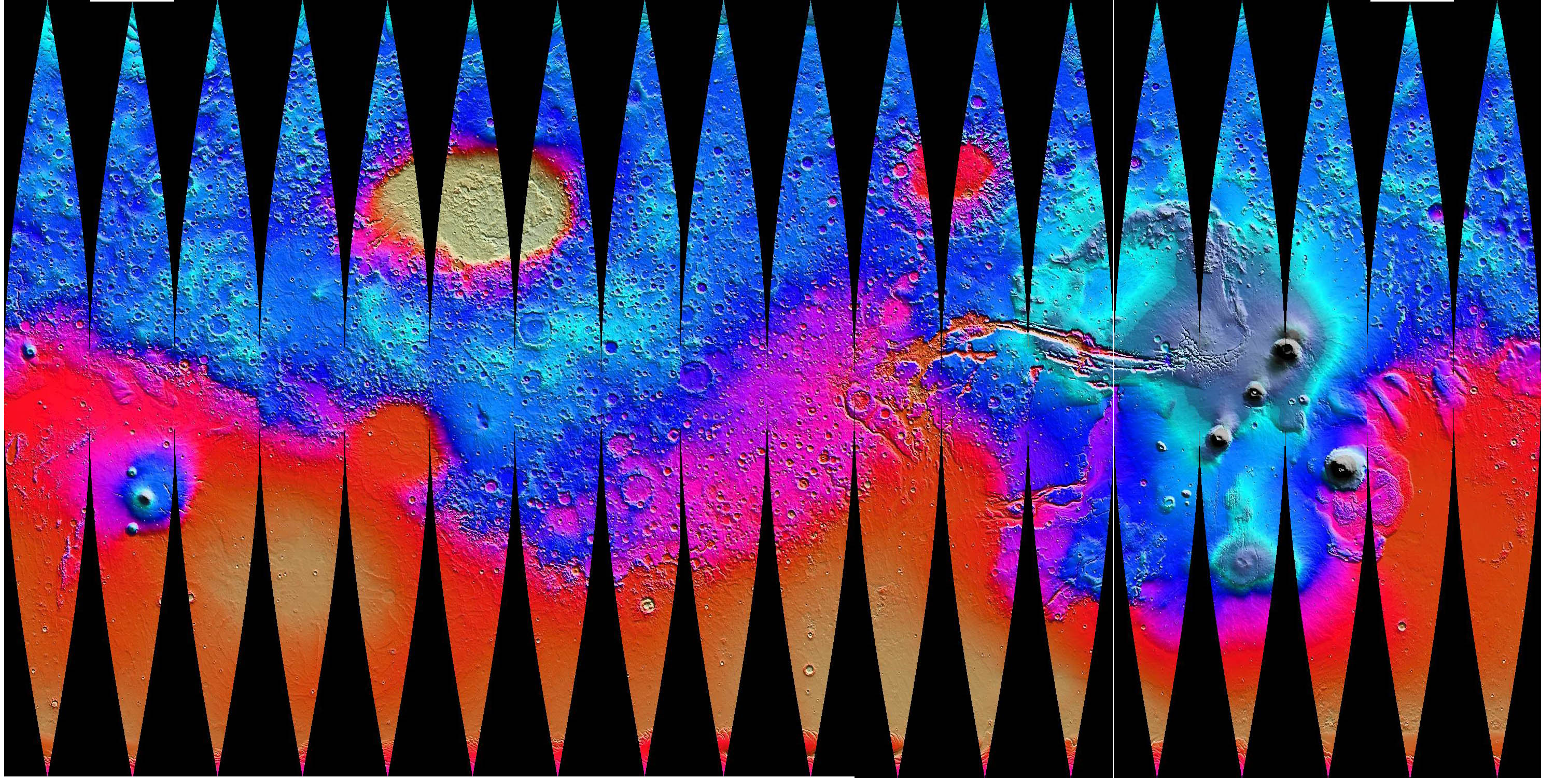
The use of orbital radar allows for even more detail to be seem as in this false color
image. Here different elevations are shown as different colors.
It was the interpretations of the shadows seen in the eye peice of their telescopes that lead to the belief that water and massive constructions such as canals were on the surface mars. From this notion, many Victorians were of the conviction that the planet Mars was peopled by a civilization as, or more, advanced then their own. This notion lead to such classics of literature as "War of the Worlds".
Today, many find it very compelling to image the world as it was seen by the Victorians. What if the real world worked by the rules that the Victorians used to order their lives? Imagine if Newtonian mechanics work in all cases, that there were no Relativity or Quantum mechanics. What if an ingenious inventor could fashion devices using the mysterious forces of electricity, magnetism, and the Æther? Imagine being able to transport the colonial soldiers of the Victorian age to the planets.
Below are links to some of the interesting things happening in the Victorian and
previctorian age. Perhaps one of the most interesting is the work of John Worrell Keely
who claimed to have tapped into the power of "Ætheric Energy". See
John Keely
and
THE KEELY MOTOR COMPANY .
And if that is not enough to get you thinking, consider
The Great Moon Hoax.
Thank yous go out to the folks at
The New York Sun.
Here is an excellent example of what can be done with the potential of Victorian creativity. Take some time to explore the times of Boilerplate.
To learn how I turn these ideas into a game, go to My Victorian Science Fiction page To see many more images go to my VSF Battles page Or you can go to Model Gallery Page. To see how I make some of the components of my games, go to my VSF How To Page. Or if you would like to see how I turn little lumps of lead into mighty soldiers, check out my 15mm painting page.
Here are some links to other folks links. I could cut and paste these, but they are doing
better then I could hope to.
Alternate Histories Plus.
favorite sites:.
I hope to be able to add more latter.
Thank you for looking:
DyeHard
To head to my Home go to Bryan's Home Page.


|Over All Home |What's New |VSF Home |My Other Hobbies| |E-mail|


This work is licensed under a Creative Commons License.